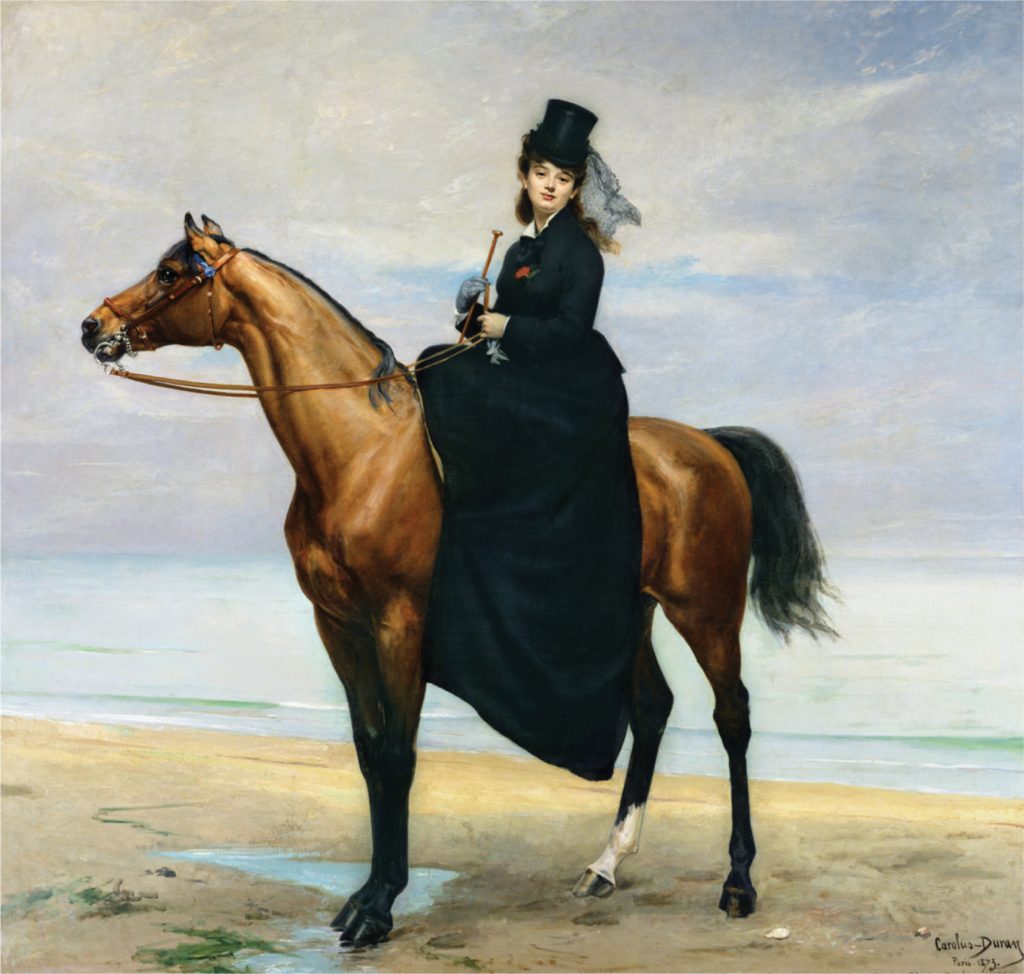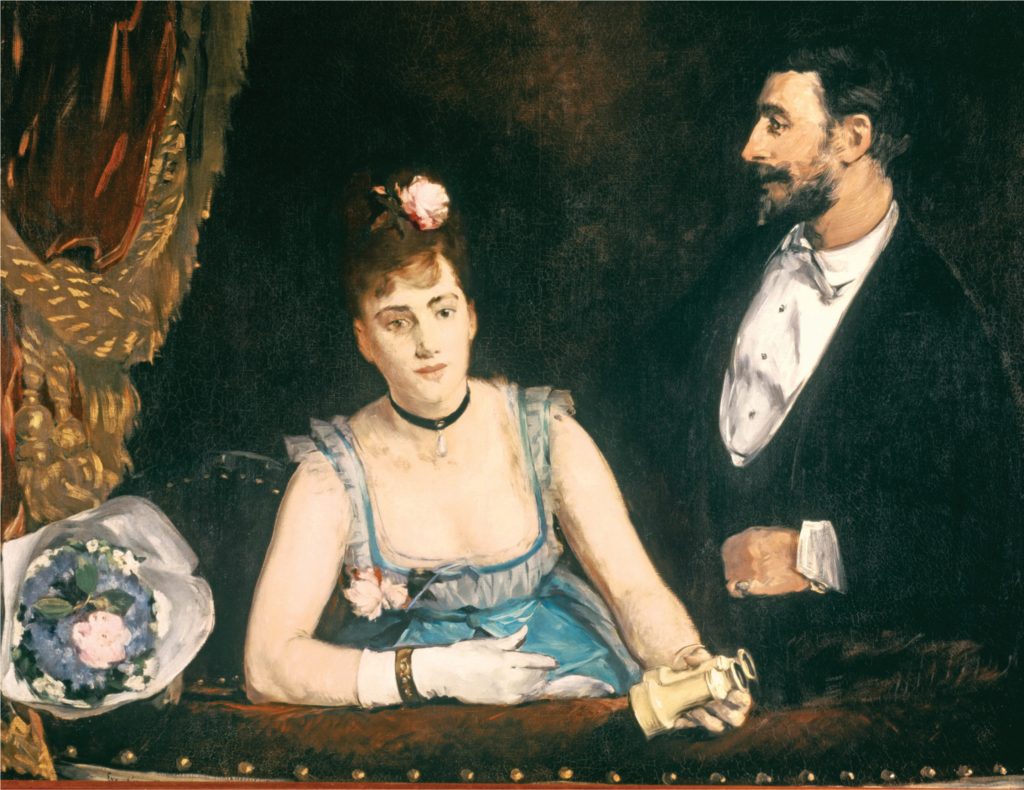
In the book Paris Fashion by Valerie Steele, the 8th chapter covers the geography and evolution of fashion in Paris. As Paris is widely known as an international capital of style for hundreds of years, the chapter I chose discusses notable sites of fashionable display, mainly in the theater and on the racetrack.
In theater, the success of plays became increasingly reliant on not just literary quality but the costumes the actresses wore on stage. Men in the audience would notice the actresses’ dresses, for it “accentuated their physical charms” and the actresses’ themselves would spend great money to get their stunning costumes. As such, it became widely believed that “superior costumes could even save a mediocre play”. However, watching performances wasn’t the only reason why people went to the theater, the audience itself was also said to be on display. Since attending the theater was considered to be a social ritual, there were many strict rules as to where certain people were allowed to sit and what dress code they were supposed to follow. From court dresses to workers’ blouses, this is what separates the spectator from whether they are in a private box or in the orchestra pit. The level of fashion expectations varies with each theater too, ranging from the Gaîté (where “the blouse prevails) and the Paris Opera (known to be “one of the temples of fashion”.
Many paintings also depict this phenomenon, oftentimes showing men or women looking at not the stage, but another private with their opera glasses.

Similar to the theater, there became an intense competition of elegance and luxury between people in horse racing on racing day. At racetracks like Longchamp and Chantilly, you would be able to find people dressed up to be judged by other fellow audience members, in addition to milliners and seamstresses looking proud to see their handiwork displayed.
Bois de Boulogne is another notable place (although not a race track but a fashionable park) where the presence of fashion is strong. Appropriate dress codes for a stroll at a fashionable promenade also became strict as clothing acceptable for a carriage ride may not be for when your on foot. As such, certain jewels for earrings were only permitted and street dresses that were short, sturdy and “without superfluous ornament” became acceptable for the morning or walks.
Overall, I enjoyed reading about past cultural fashion practices, especially on the equestrian sport. It was fascinating to learn about how highly thought of fashion was in daily life, like having strict different appropriate dress codes for whether you’re in a carriage or not and how different theaters had varied levels of expectation in fashion. In addition to that, there were other parts of the article I found interesting that weren’t really about horseback riding and theater. For instance, the emergence of wearing certain garments such as bloomers and trousers (for cycling), and how the popularity of them among women wasn’t fully accepted even though it was presented in France as an increasingly fashionable item.
Sarah, this chapter sounds very interesting. It makes me think of a number of questions: where do you think people go on display now-a-days? Where do college students go to go on display? How did class play a role on who went on display? How does class play a role today? This article seems to really illustrate how fashion is used as an art form and also as a form for communicating status, values, class, job, etc. Very nice synopsis as well.